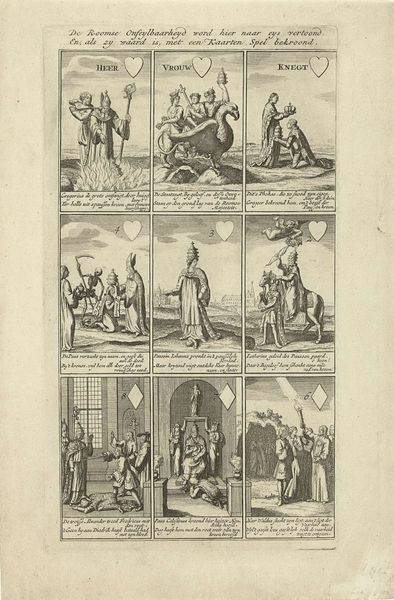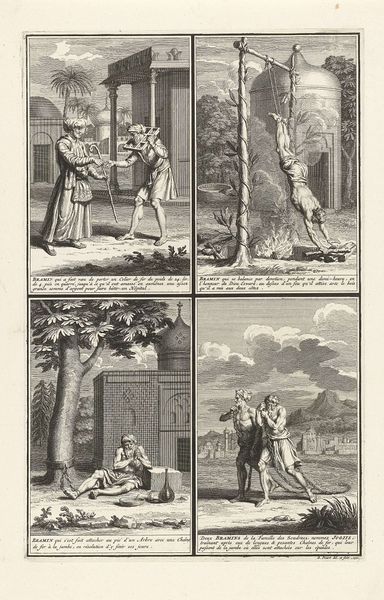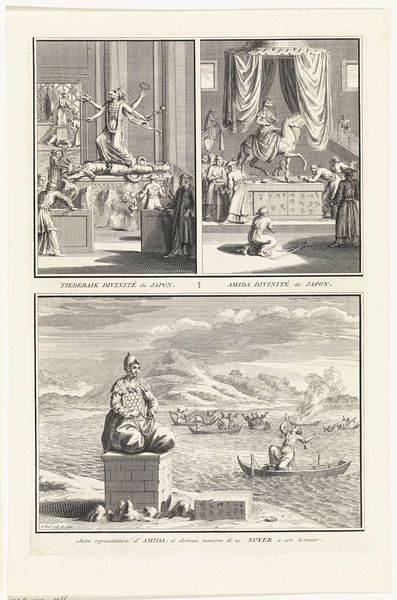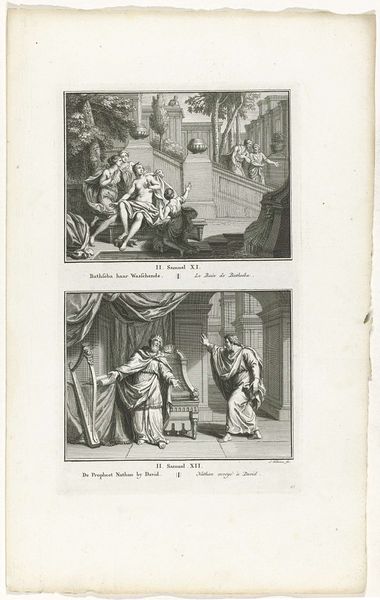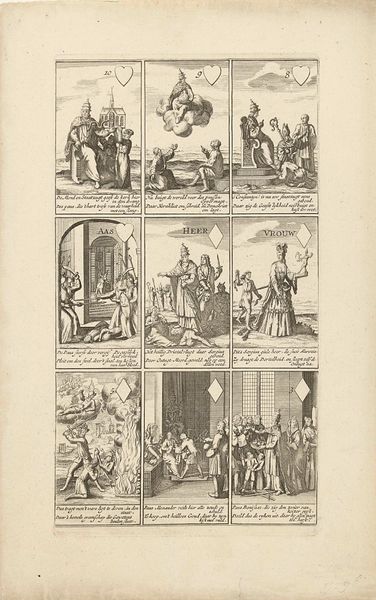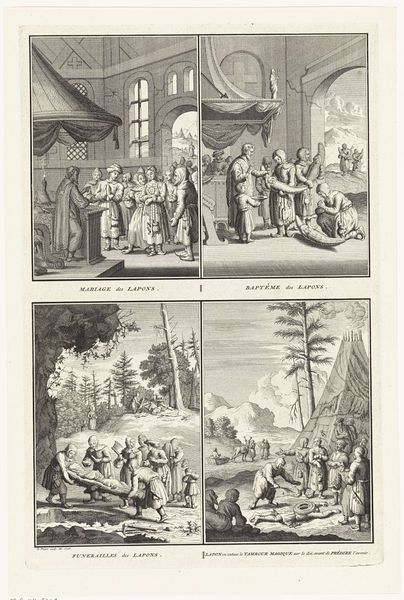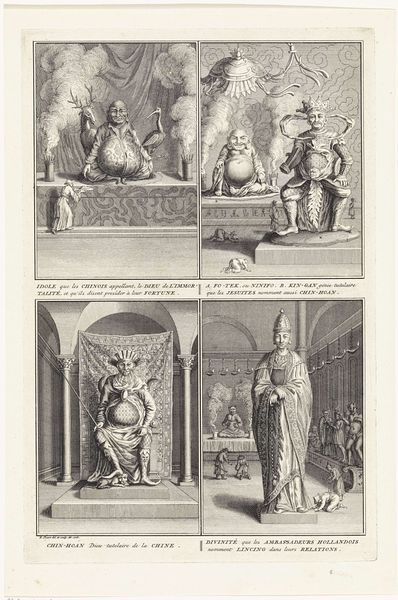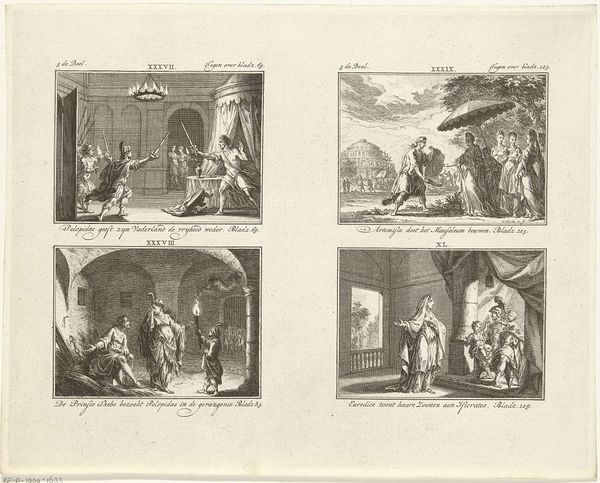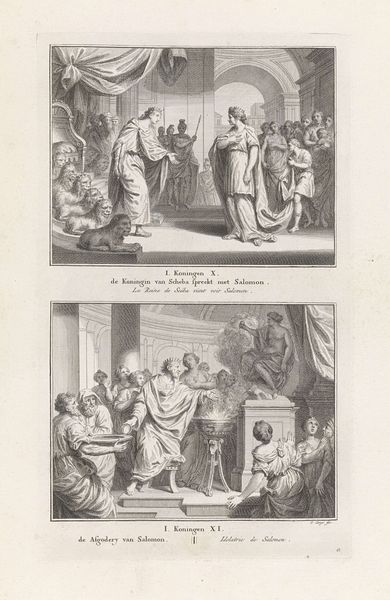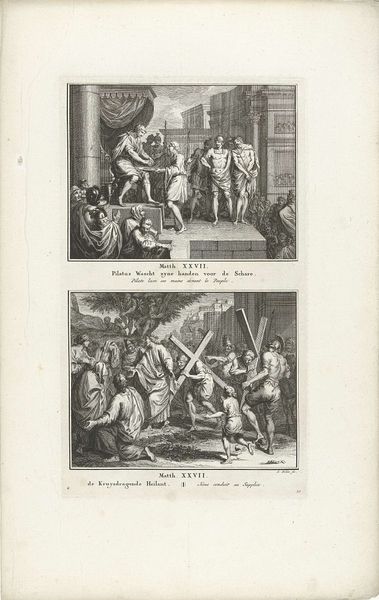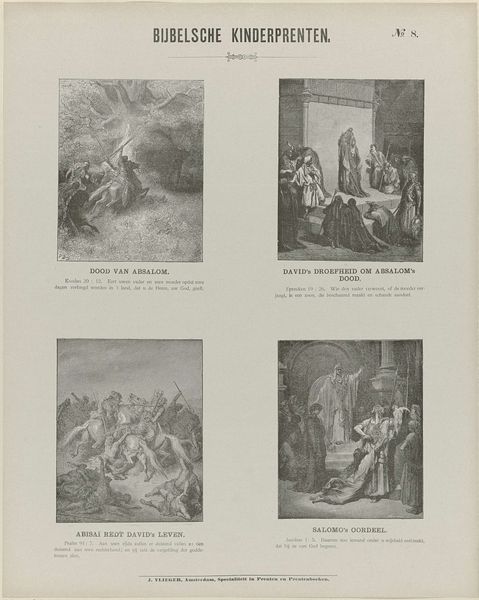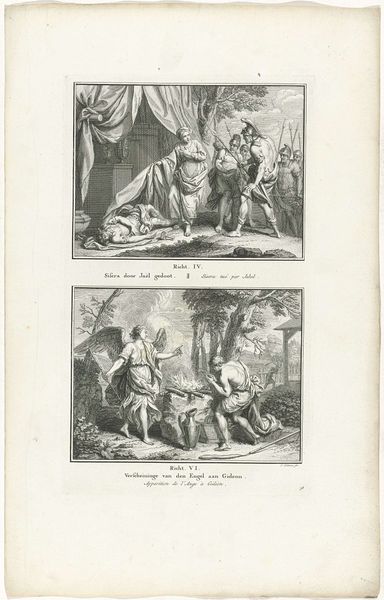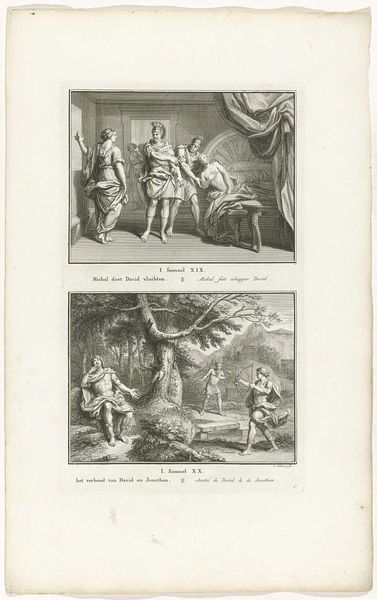
print, engraving
# print
#
traditional media
#
engraving
Dimensions: height 335 mm, width 223 mm
Copyright: Rijks Museum: Open Domain
Curator: This engraving from 1723 by Bernard Picart is titled "Voorstellingen van Mexicaanse goden," or "Representations of Mexican Gods." It’s held here at the Rijksmuseum. Editor: Whoa, okay, immediately, it gives off this real 'stolen glimpses' vibe, like we're not supposed to be seeing this. It’s formal, like a catalog of deities. A little…clinical. Curator: Yes, "clinical" is a great word! The engraving style gives it that objective feel, doesn’t it? It depicts four different scenes. Let's focus on the top left, which presents Huitzilopochtli, the Aztec god of war, sun, and sacrifice. Notice how he’s perched atop a sphere. Editor: Totally, balanced precariously. Is it just me, or is there this feeling of…staging? Like everything’s deliberately positioned. It almost feels like the artist is putting on a performance of what ancient Aztec religion was like. The skulls, for instance, feel particularly…theatrical. Curator: That theatricality points to a crucial aspect of how Europeans in the 18th century were grappling with and interpreting cultures very different from their own. These skulls in the lower left quadrant might signal death and sacrifice, central aspects of Aztec religious life. But seen through a European lens, they become exotic and somewhat sensationalized. Editor: Exactly. And it’s weird because the figures themselves, while rendered in this crisp, almost hyper-realistic way, seem strangely detached from their surroundings. Is that purposeful, do you think? A commentary, perhaps? Curator: Perhaps. Picart's goal wasn't ethnographic accuracy so much as creating allegorical representations. Consider Tlaloc in the upper right, god of rain. Those implements are like divine instruments to bring fertility. But again, filtered through the artist's perspective. It’s about power, presentation and cultural bias. Editor: Right. This isn’t just an innocent depiction, is it? It’s history as seen through a specific…and possibly distorted…lens. Even the last scene labeled "Prêtres Mexicains" gives us more about European ideas of Mexican hierarchy. Curator: Precisely. And the artistry serves that interpretation. The clear lines, the careful arrangement… it all underscores a certain worldview. It tells us much about the era in which this was made as about the cultures it depicts. Editor: Well, it’s certainly given me a lot to think about – how easily cultural representation can be… commandeered by perspective. Curator: Indeed, it underscores the responsibility that we bear, as interpreters of these images. Thank you for these interesting impressions.
Comments
No comments
Be the first to comment and join the conversation on the ultimate creative platform.
